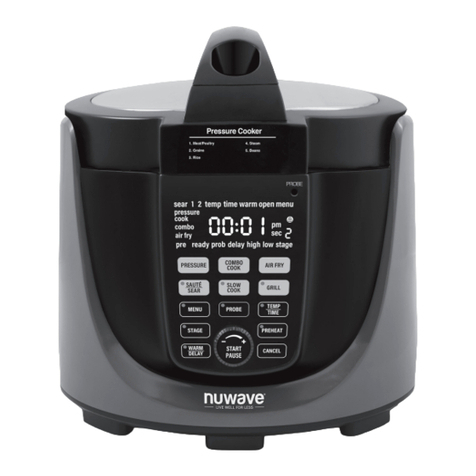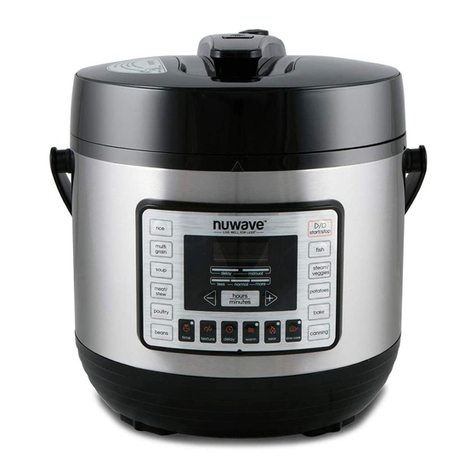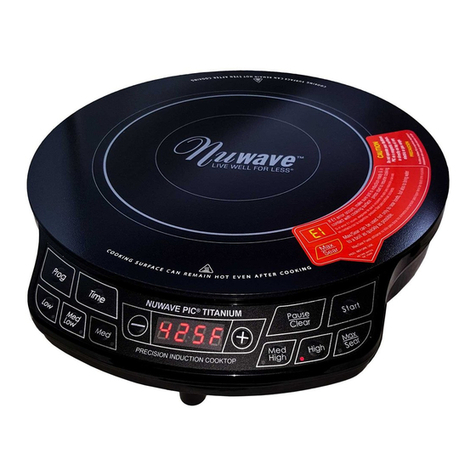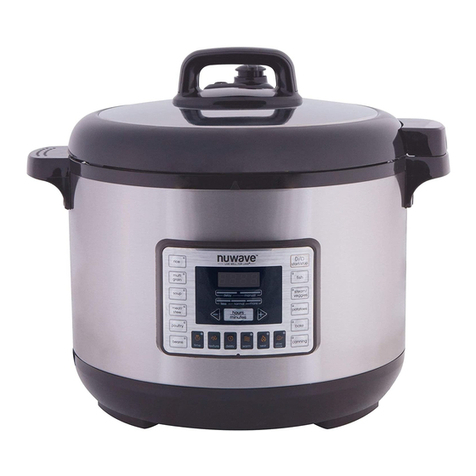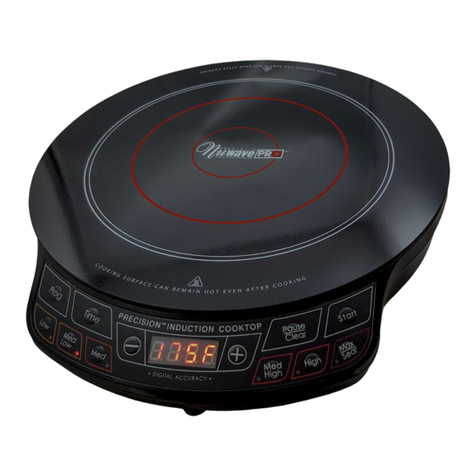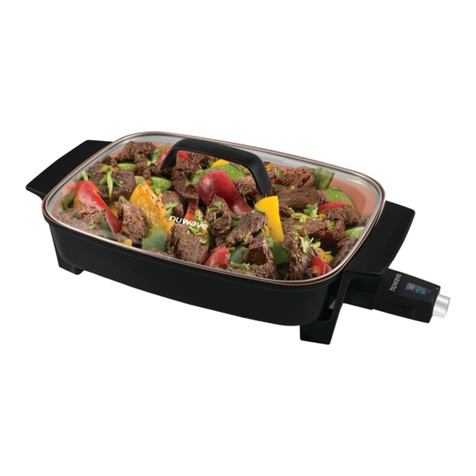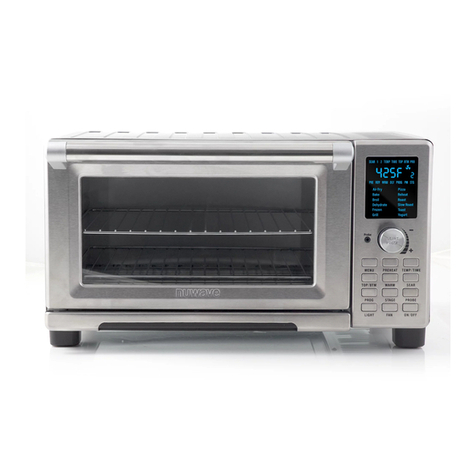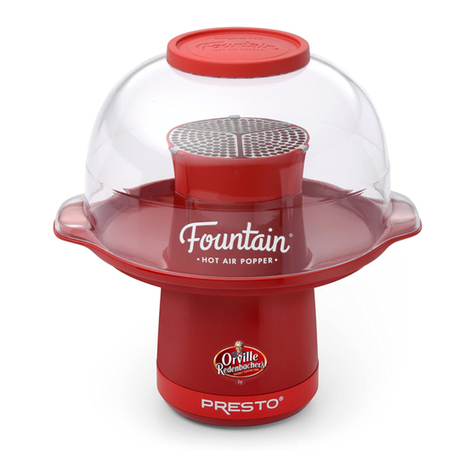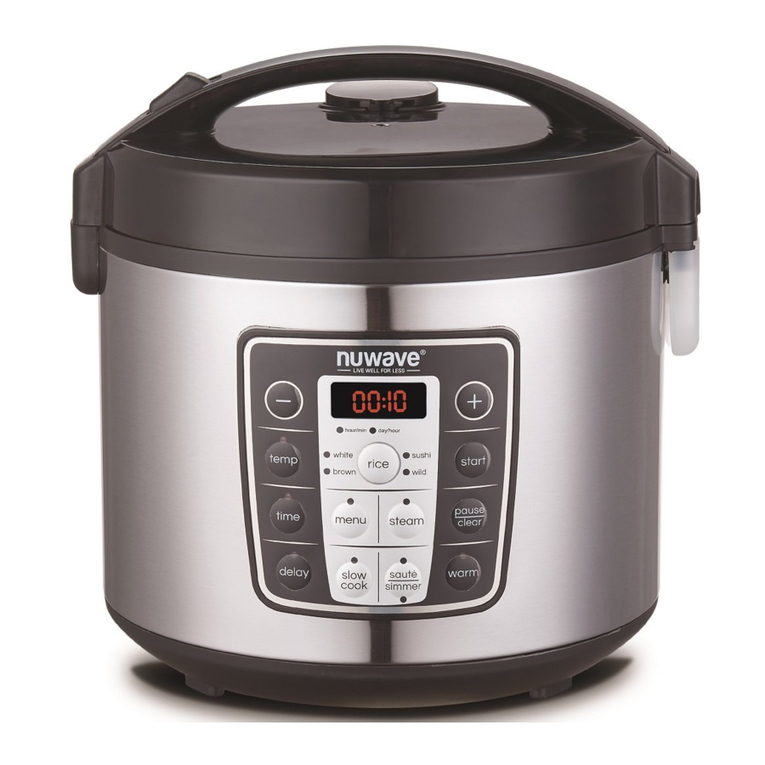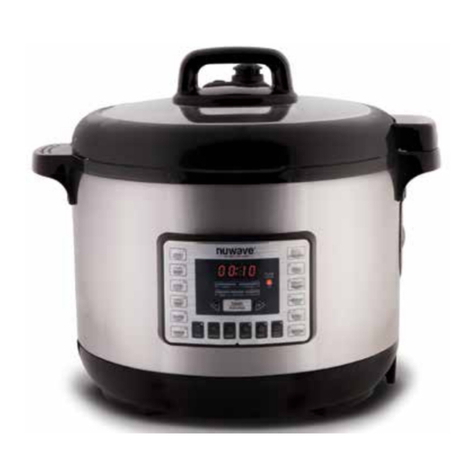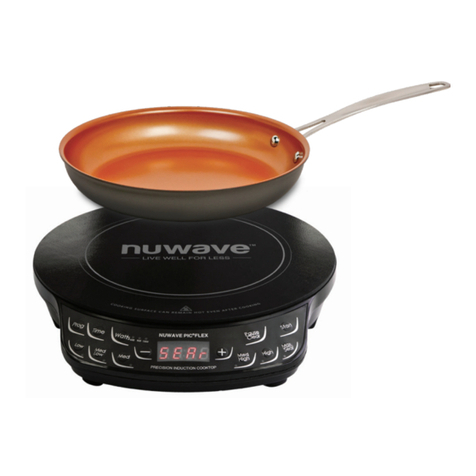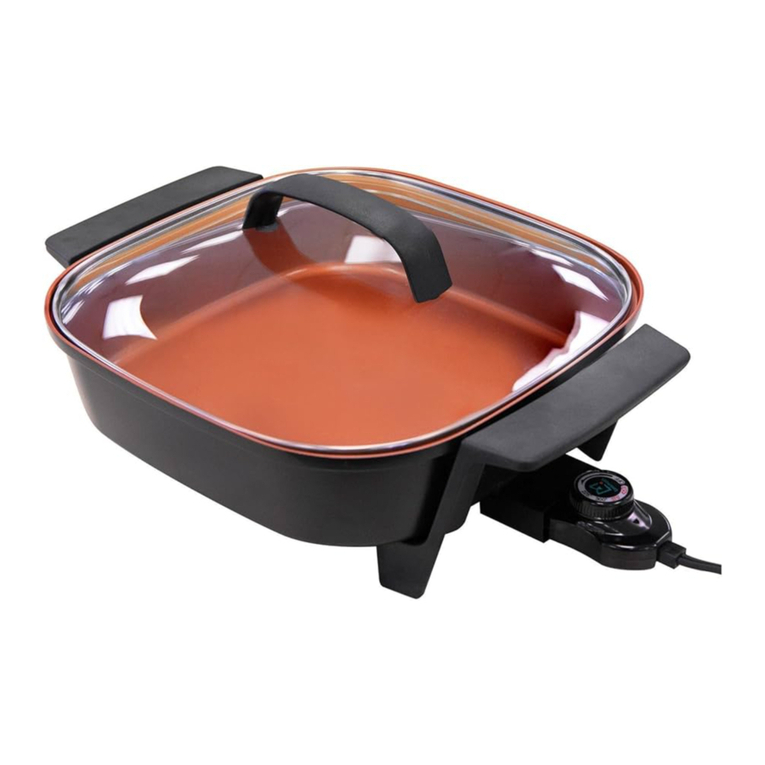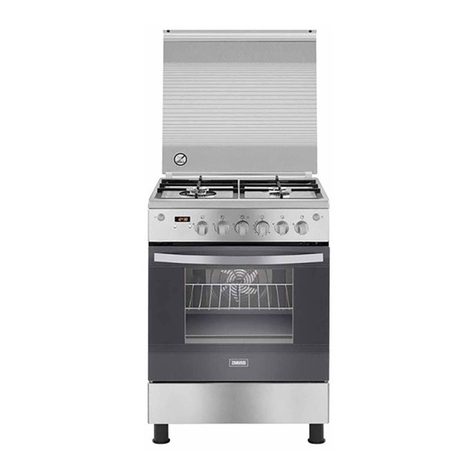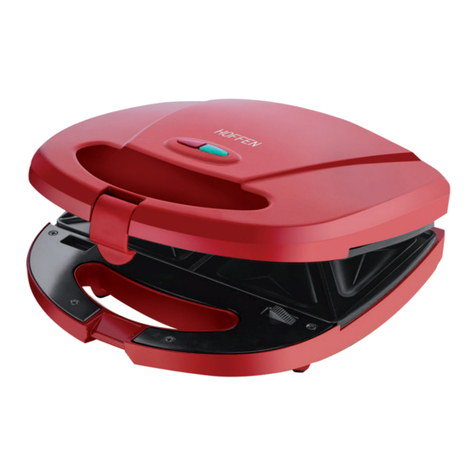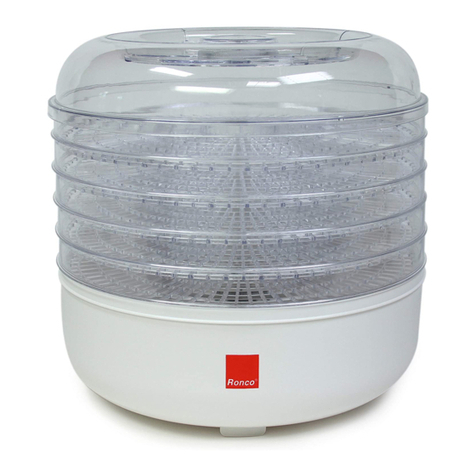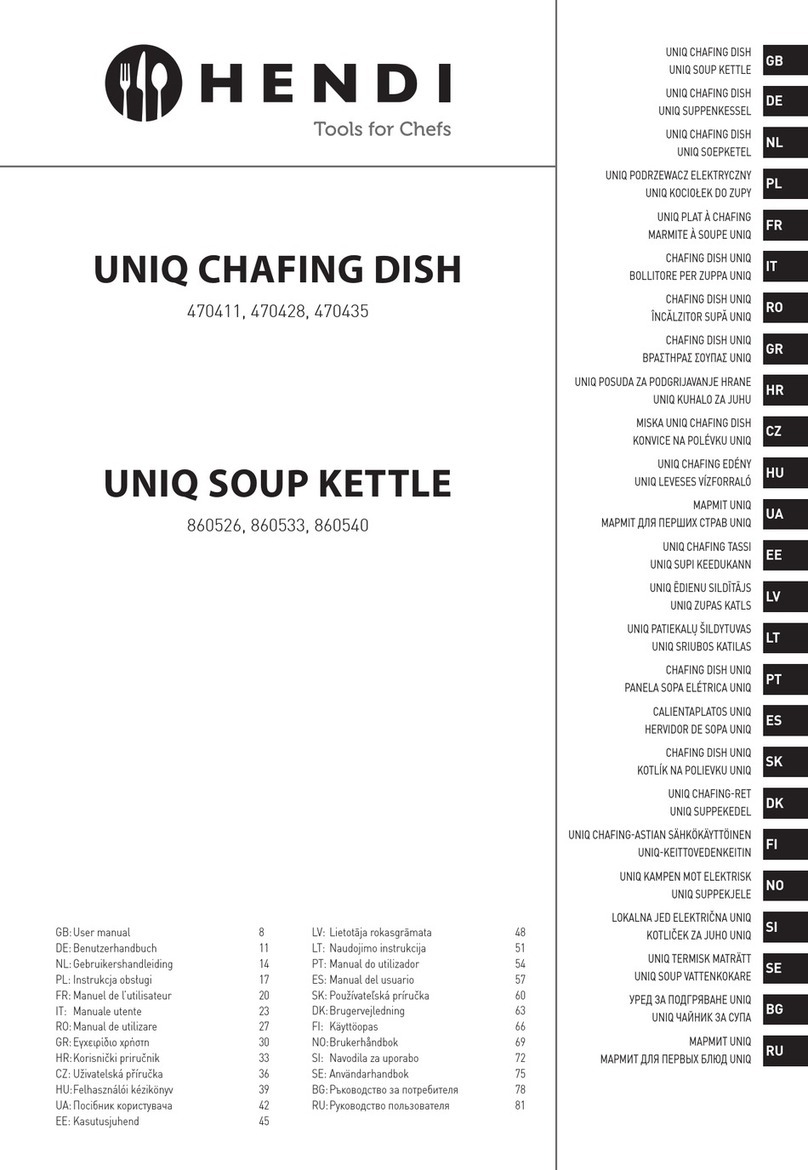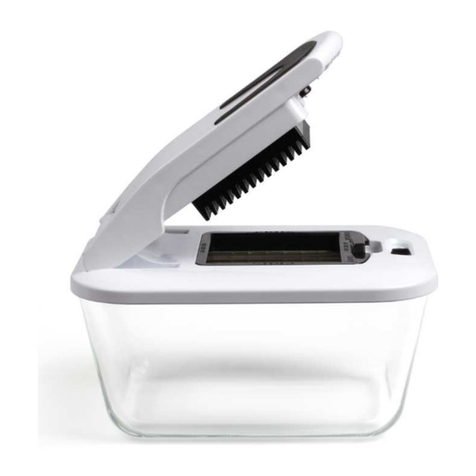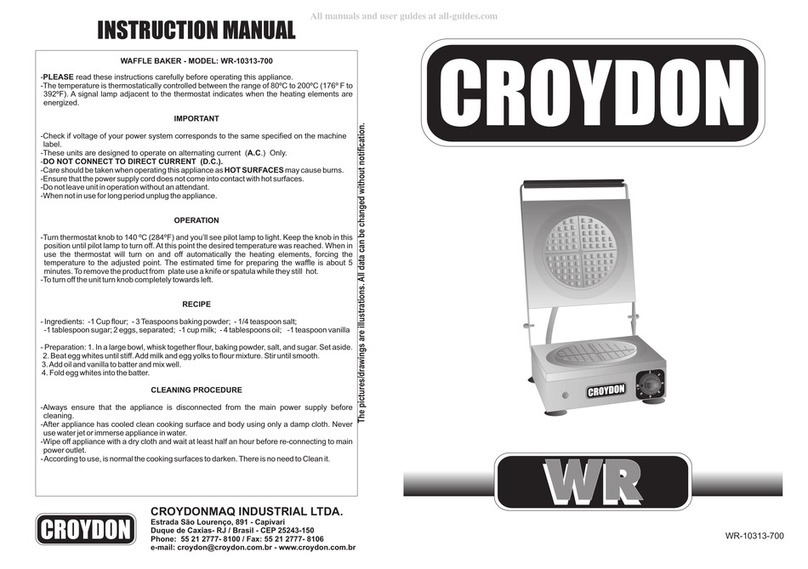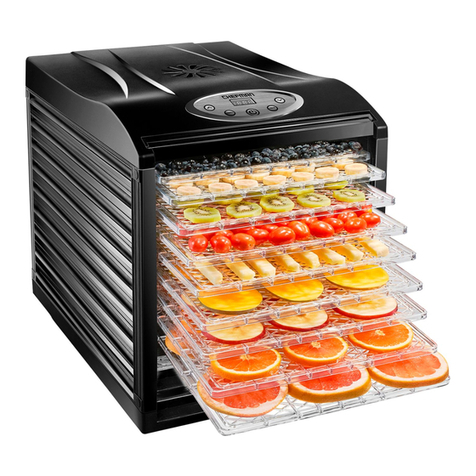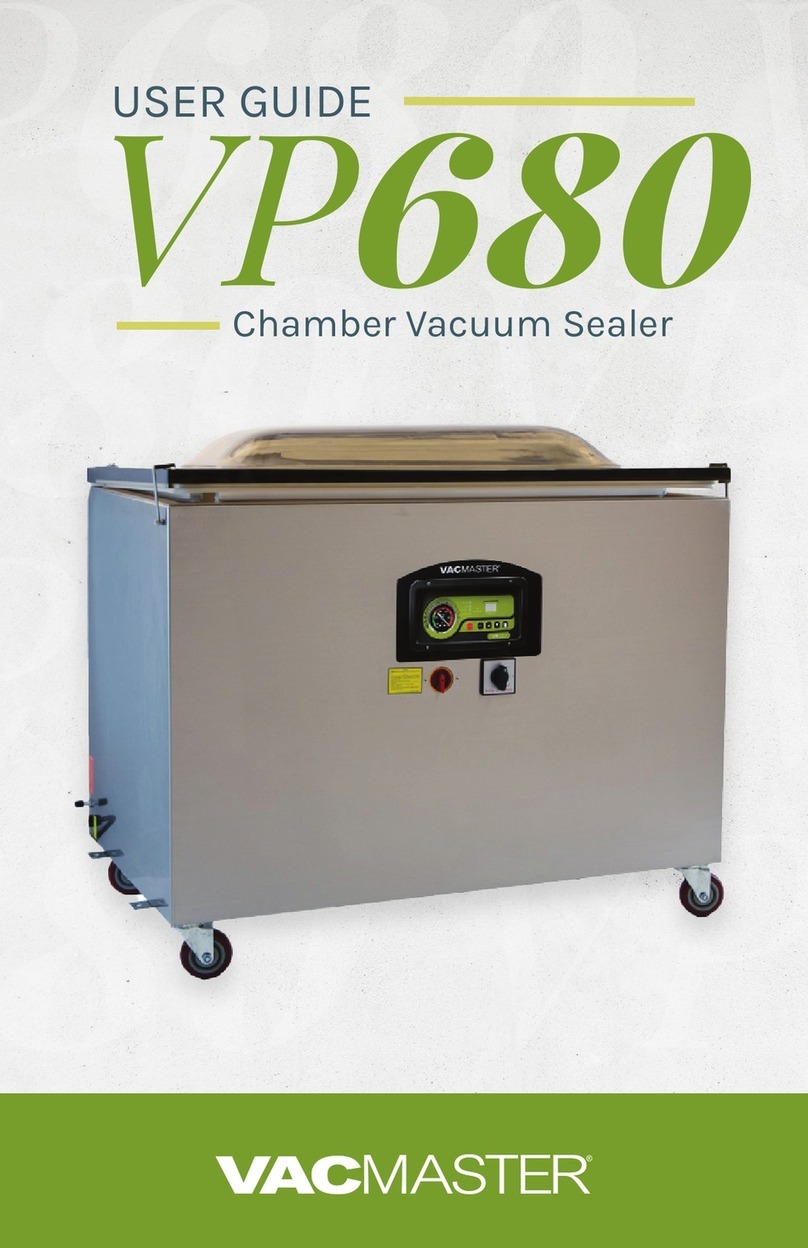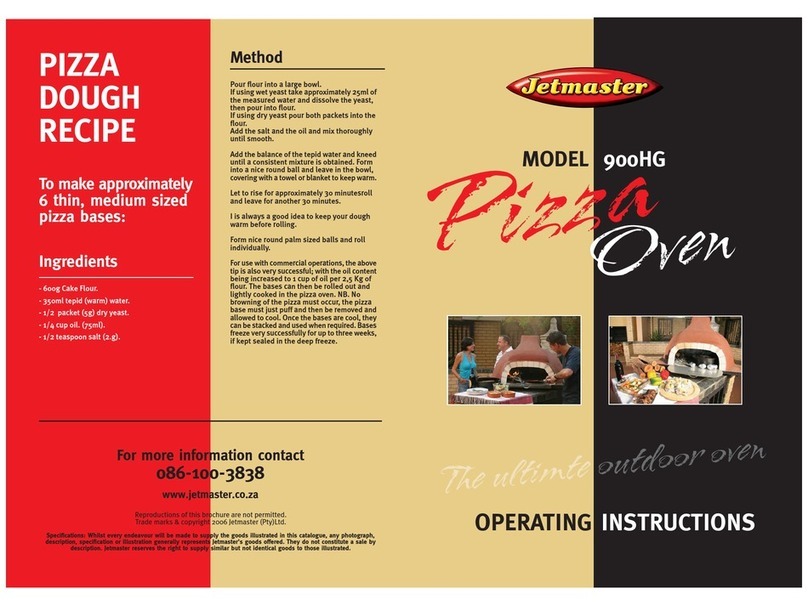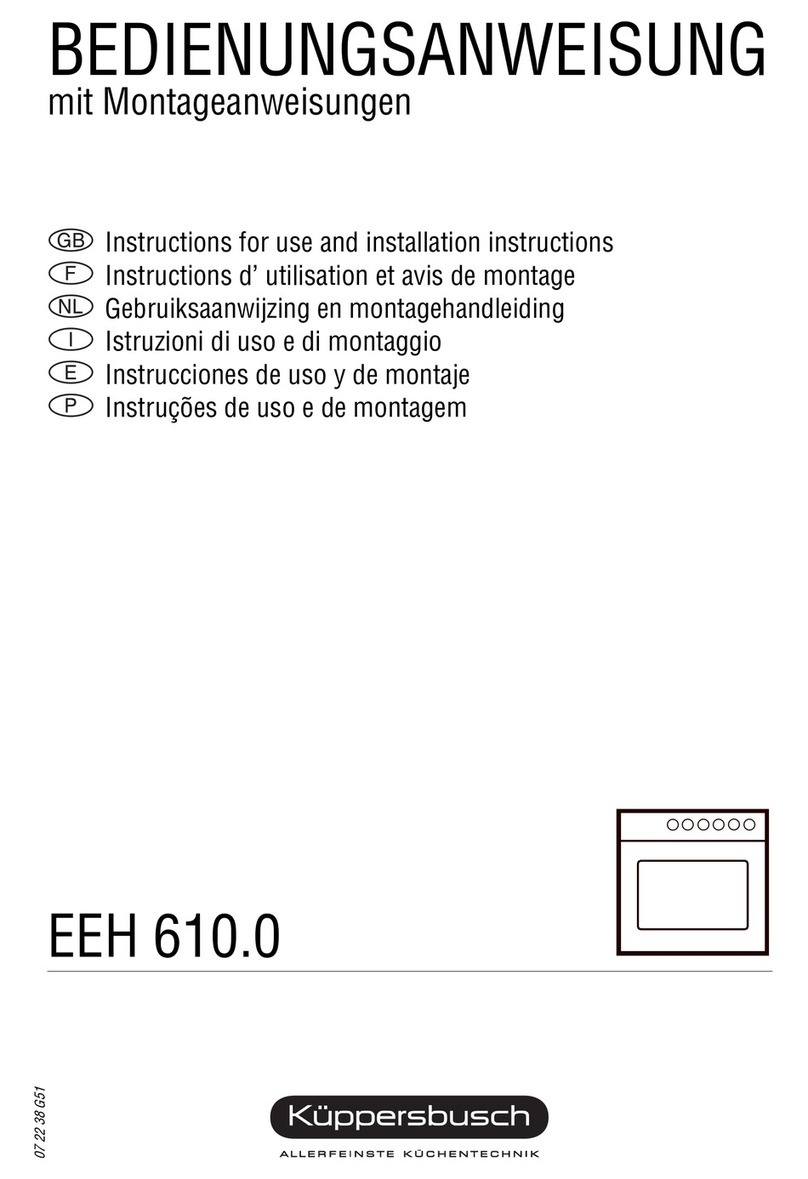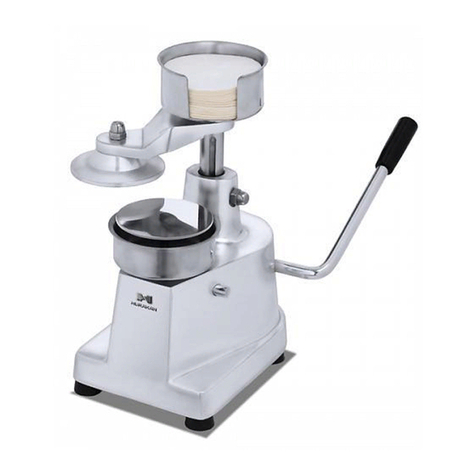
6Important Safeguards
Important Safeguards
Read all instructions
1. Do not touch hot surfaces. Use handles.
2. Close supervision is necessary when the pressure cooker is used near children.
3. Do not place the pressure cooker in a heated oven.
4. Extreme caution must be used when moving a pressure cooker containing hot
liquids.
5. Do not use pressure cooker for other than intended use.
6. This appliance cooks under pressure. Improper use may result in scalding
injury. Make certain unit is properly closed before operating. See Operating
Instructions.
7. Do not fill the unit over ⅔full. When cooking foods that expand during
cooking such as rice or dried vegetables, do not fill the unit over ½full.
Over filling may cause a risk of clogging the vent pipe and developing excess
pressure. See Operating Instructions.
8. Be aware that certain foods, such as applesauce, cranberries, pearl barley,
oatmeal or other cereals, split peas, noodles, macaroni, rhubarb, or spaghetti
can foam, froth, and sputter, and clog the pressure release device (steam vent).
These foods should not be cooked in a pressure cooker.
9. Always check the pressure release devices for clogging before use.
10. Do not open the pressure cooker until the unit has cooled and all internal
pressure has been released. If the handles are difficult to push apart, this
indicates that the cooker is still pressurized – do not force it open. Any
pressure in the cooker can be hazardous. See Operating Instructions.
11. Do not use this pressure cooker for pressure frying with oil.
12. When the normal operating pressure is reached, turn the heat down so all the
liquid, which creates the steam, does not evaporate.
SAVE THESE INSTRUCTIONS.
